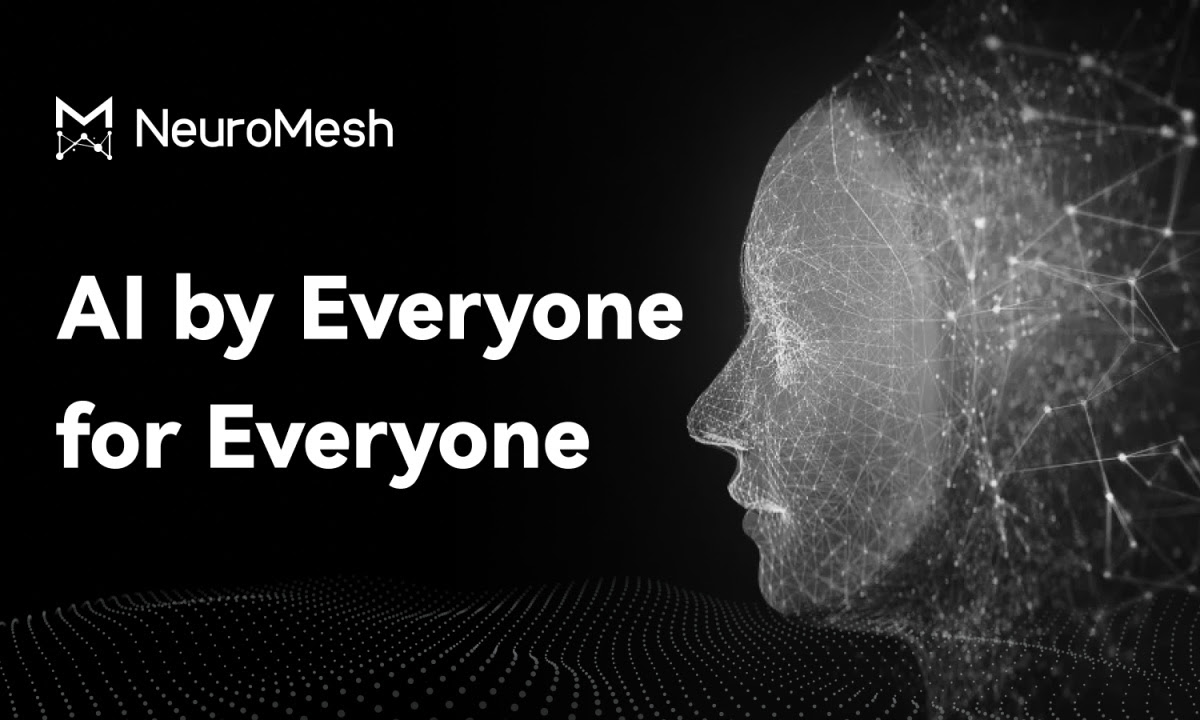NeuroMesh Spearheads New AI Era with Distributed Training Protocol

NeuroMesh, a pioneer in artificial intelligence, unveils its distributed AI training protocol to transform global access and collaboration in AI development. With a deep understanding of blockchain technology, NeuroMesh effectively connects the need for extensive training in AI models with the availability of distributed GPUs through DePIN’s decentralized framework. This initiative strives to promote inclusivity in AI development, encouraging participation from various sectors and regions.
Visionaries in AI: The Team’s Global Ambition
The team behind NeuroMesh, consisting of experts from renowned academic institutions and industry leaders, is at the forefront of developing a democratic AI training process. With a deep understanding of blockchain technology, this innovative approach tackles the drawbacks of centralized AI development. It allows GPU owners from around the globe to join a vast training network, giving organizations of all scales the power to utilize this service for their training requirements.
NeuroMesh goes beyond conventional AI by promoting collaboration. Its vision is to empower developers and organizations worldwide, enabling them to train and utilize state-of-the-art AI models. This perfectly aligns with the vision of AI pioneers who advocate for a future powered by crowdsourced and distributed AI training.
A groundbreaking design boosted by PCN technology
NeuroMesh’s distributed training protocol is powered by the revolutionary PCN (Predictive Coding Network) training algorithm, which has completely transformed the landscape of this industry. This approach encourages GPU owners worldwide to contribute their computing power, promoting a large-scale collaborative effort.
The PCN Training Algorithm: The secret behind NeuroMesh lies in the PCN training algorithm. PCN allows for fully local, parallel, and autonomous training, which departs from traditional backpropagation (BP) methods. The team is focused on building a large network where every node representing a participating GPU learns independently. PCN optimizes inter-layer communication, which results in decreased data traffic and smoother asynchronous training. Imagine it as a symphony where every musician plays their role independently yet contributes to a harmonious whole.
This state-of-the-art model, influenced by the latest breakthroughs in neuroscience research led by Oxford University, emulates the human brain’s localized learning approach. By storing error values and optimising a local target in each layer, it emulates the functionality of neurons in the brain. NeuroMesh can define models on a larger scale, where each component works towards a common optimization goal for the entire network. This is similar to how the human brain processes different stimuli through various groups of neurons.
This innovative approach and its natural distribution capabilities usher in a new era of AI development.
An Urgent Plea for Global Collaboration
NeuroMesh is actively seeking global partnerships to create an inclusive AI future. The protocol forms the foundation for a wide-ranging ecosystem currently under development. With a deep understanding of the ecosystem, one can appreciate its dynamic, collaborative, and adaptable nature, which allows it to cater to the AI model training requirements of various industries and sizes.
Anyone interested in joining this initiative is encouraged to participate, regardless of their background or resources. To get all the information about NeuroMesh and join this cutting-edge project, users can visit nmesh.io.